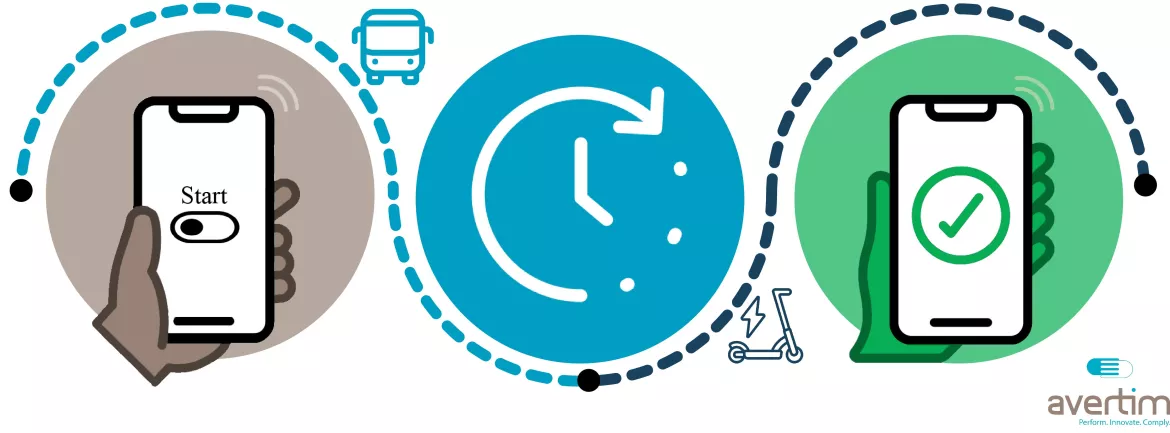Mobility is a major challenge and a significant catalyst for climate change.
The adoption of sustainable transportation modes, as a replacement for individual cars, is part of the global solution. Nevertheless, the implementation and transition to a modal system appear to be slow and tedious. Today in Belgium, more than 4 million individuals still use their private cars compared to 940,000 people who regularly use public transportation (Vias Modal Split, 2022). Considering this, how could innovative options help? Nowadays, there has been a proliferation of innovative mobility solutions with the emergence of various players such as Uber, Bolt and Poppy. What they have in common is their reliance on the Pay-As-You-Go (PAYG) model.

The concept is to pay only for consumption-based pricing services, without committing to a long-term subscription or having to purchase specific tickets. This system offers a flexible and cost-effective pricing model in a journey that can combine different transport modes and operators. These PAYG platforms offer numerous benefits, including promoting sustainable mobility by encouraging the use of shared and public transportation.
There are various types of support where PAYG is possible. This can be done through a mobile application or on a non-digital medium such as a physical card. By providing flexible payment options and eliminating the need for separate tickets, these platforms simplify the user experience and encourage multimodal travel.
For example, in London, they use the "Oyster card" - a rechargeable electronic card used to pay for public transportation journeys, including the underground, buses, trams, DLR (Docklands Light Railway), and certain rail services. This integration of various modes of transport on a single card enables seamless travel and encourages commuters to choose public transportation over private cars.
To take a (digital) step further regarding PAYG platforms, in Switzerland, taking public transport is summed up in a single mobile application called "Fairtiq." Just sit on the bus, launch the "start" button on your app, and the journey starts in peace. The user only needs to press "stop" once the journey is complete. This convenient and user-friendly approach makes it easier for individuals to navigate the transportation system and encourages the use of public transport.
So, where are we in Belgium in the public sector?
There is currently no Pay-As-You-Go platform available for travelers of public networks. This is mainly due to the complexity of integrating different transport systems, coordinating among various stakeholders, reaching an agreement on pricing for all operators and raising public awareness. Overcoming these challenges requires strategic planning, collaboration and effective communication to ensure the successful implementation of PAYG platforms.
At Avertim, we strongly believe that these consumption-based pricing platforms have the potential to revolutionize mobility by offering convenient and flexible options, and streamlining the user experience. While there are challenges to overcome, the benefits make them a promising solution for achieving a more efficient and environmentally friendly transportation system. However, this solution will not succeed if it is not embedded within a broader and transformative shift.


